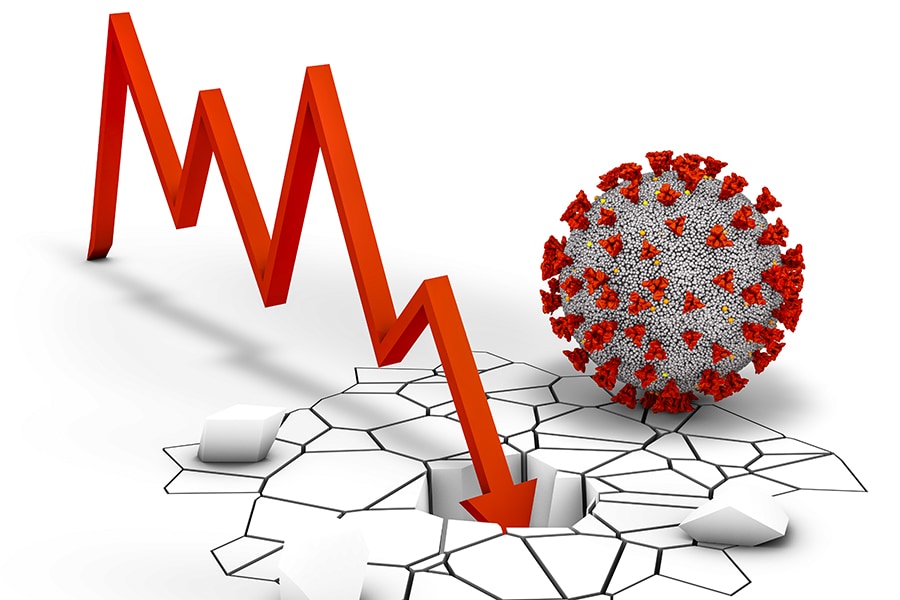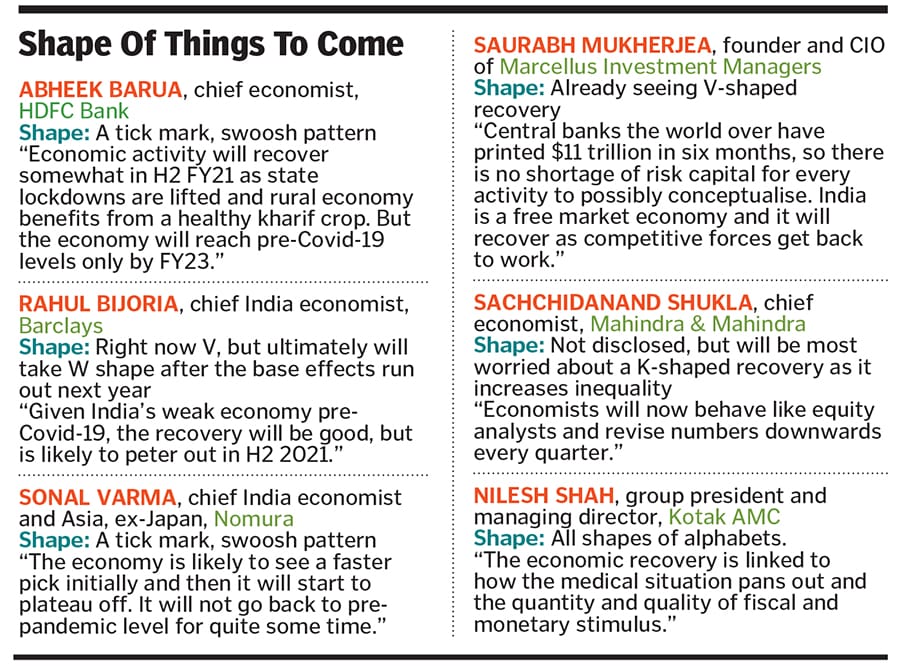
India's economy: The unknown shape of things to come
With infection numbers still rising, forecasting full year growth just became a lot harder for economists
 Image: Shutterstock
Image: ShutterstockIndia’s first quarter growth numbers, which showed the economy contracting 23.9 percent, made it to the top of newspapers, television debates and social media. Commentators spoke about how long it would take for us to get out of this slump, economists began work on predicting the full year decline and consumers took stock of what the news could mean for their jobs and personal finances.
But the sharp decline in growth masked an important fact—every forecast had predicted a fall in excess of 20 percent. With a hard lockdown starting March 25 and a shutting down of both supply and demand, the numbers were relatively easy to forecast. As both leading and lagging indicators fell, and infection numbers rose, predicting the quantum of the decline was possible. Most models had forecast 100,000 cases to be reached between August and October.

Now, with nearly half the fiscal nearly over, the uncertainty has dramatically increased. With cases still rising and a peak nowhere in sight, it remains to be seen where full year growth will settle.
Growth momentum is slow and pent up buying for April and May and some part of June is largely over. The last fortnight has seen a slew of downgrades with the range settling at a contraction of between 8 and 11.5 percent. But even these numbers could see further revisions as the case load grows and the spatial spread increases. As of September 17, India has the second highest incidence of Covid-19 after the United States, at 5.12 million cases.
Local administrations across India have imposed intermittent lockdowns with no prior warning, throwing the supply chain out of gear. For the auto industry, which operates a just-in-time model, this has at times meant that critical parts may be unavailable. Consumer companies may be unable to produce the right pack sizes needed. And government projects, the only part of the economy that recorded growth in the first quarter, would take longer to complete. The supply side disruptions have led to a spike in retail inflation. In August, the number stood at 6.69 percent.








